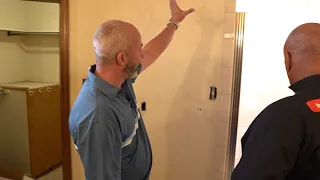When your hose bib (also known as a yard hydrant or outdoor spigot) starts to drip or spray, it’s tempting to toss on a quick fix—maybe tighten the handle or wrap some tape. But if the valve is corroded or the washer’s shot, the leak will likely return. Replacing or repairing the hose bib properly ensures a watertight seal and protects your home’s foundation from water damage. In this guide, we’ll walk through the real-world steps of uncovering and swapping out a faulty hose bib, including how to handle soldered connections in tight spaces and how to install a vacuum breaker for extra protection.
Why a Leaky Hose Bib Matters
Escalating Water Bills and Wasted Resources
Even a slow drip can waste gallons per day. Over weeks or months, that adds up to a significant spike in your utility bill. Conserving water also helps preserve local resources—so repairing a leaky spigot is good for both your wallet and the environment.
Potential Foundation Problems
Outdoor faucets are often installed through exterior walls or near foundations. Constant water seepage can erode soil, cause moisture to accumulate near the slab, and promote mold or mildew. Addressing leaks promptly reduces the risk of expensive structural repairs down the road.
Risk of Freezing and Further Damage
In colder climates, a leaking hose bib can worsen freeze-thaw cycles. If water remains in the spigot or piping, it can expand when freezing and crack the metal or burst a line inside the wall, leading to a more costly repair come spring.
Avoiding Annoying Drips
No one wants a dripping faucet outside—especially at night, when that steady tap… tap… tap is loud enough to drive you nuts. Fixing the underlying issue silences that drip for good.
Common Reasons Hose Bibs Leak
- Worn Washer
The simplest explanation: the rubber washer inside the valve is cracked or deformed, preventing a proper seal when the faucet is closed. - Damaged Packing Nut
The packing or bonnet nut around the stem can loosen or degrade, allowing water to weep out around the handle. Sometimes tightening it gently solves the problem; other times, you need new packing material. - Freeze Damage
If water in the spigot or supply line freezes, it can split the metal—often near the valve seat or just behind the wall. In mild climates, people rarely winterize faucets, so unexpected cold snaps can cause trouble. - Corroded Valve Body
Over years, corrosion inside a cheap or older valve can develop pinholes. At that stage, you’re better off replacing the entire fixture. - Improper Installation
If the hose bib was poorly soldered or cross-threaded, a slow leak could appear soon after the job is “finished.”
Tools and Materials You’ll Need
- Screwdrivers (flathead and Phillips)
- Utility knife or chisel (to scrape away mortar around the faucet if needed)
- Torch and soldering kit (if working with copper)
- Lead-free solder and flux (for sweat fittings)
- Press tool and fittings (optional if you prefer press fittings)
- Adjustable wrenches or pliers
- Replacement hose bib (frost-free if desired, or a standard one if climate allows)
- Copper fittings or adapters (male adapter if converting to a threaded hose bib)
- Vacuum breaker (to prevent backflow)
- Teflon tape and pipe dope (for threaded connections)
- Caulk or mortar mix (to reseal the opening around the pipe)
- Water source shutoff (you’ll need the main supply valve or a dedicated line valve)
Step-by-Step: Fix a Leaking Hose Bib
1. Inspect the Leak Source
Before grabbing tools, confirm exactly where the water seeps out:
- Handle Packing Nut: Try gently tightening it a quarter-turn. If it stops leaking, you’re in luck—no deeper fix needed.
- Valve Still Leaks While Off: The internal washer or seat is likely damaged. Replacing just the washer might help, but it often makes sense to install a new hose bib entirely if the fixture is old or corroded.
- Behind the Brick or Siding: Sometimes you see water around the pipe entering the wall. This could indicate a solder joint failure or freeze damage. You may need to open up some wall material carefully.
2. Expose the Connection (If Needed)
In the video scenario, mortar or brick concealed the solder joint. Gently use a screwdriver or small chisel to break away mortar:
- Go Slow: Avoid cracking large areas of brick or tile. You only need enough space to maneuver your torch or wrenches.
- Check if Threaded or Soldered: Many older installations use sweat (solder) joints. Others have a male or female adapter in the wall.
3. Shut Off and Drain the Water
Locate your main shutoff (often near the street meter in older homes). Open the hose bib fully and maybe an interior faucet at a lower level to help drain the line. If water continuously trickles, press fittings might be a better choice since soldering with constant drips is tricky.
4. Remove the Old Faucet
Depending on the connection:
- Threaded: Unscrew the hose bib from the fitting behind the wall using wrenches or pliers. If stuck, apply gentle heat or penetrating oil.
- Soldered: Heat the joint thoroughly until the solder liquefies. Carefully pull the old faucet off while still hot. Watch for any insulation near the flame—move it aside or wet it to prevent fire.
5. Prep the Pipe for a New Connection
Clean the copper pipe’s outside with emery cloth or a pipe-cleaning brush. Remove residual solder by heating lightly and wiping with a rag or carefully use pliers to “pull” the old solder. Alternatively:
- Press Fitting: Dry the pipe end, smooth any burrs, and use the correct sized press coupling.
- Male Adapter Method: If you want an easily replaceable hose bib, solder or press on a male adapter so the new spigot can just thread on.
6. Attach the New Hose Bib or Adapter
If Soldering:
- Apply flux to the cleaned pipe and inside of the fitting.
- Push them together firmly.
- Heat the joint until solder melts on contact.
- Let the joint cool, wiping away excess flux gently.
If Using Press Fittings:
- Slip the press fitting onto the pipe.
- Ensure the fitting is properly seated to the correct depth.
- Use the press tool jaws around the fitting, activate the tool to crimp.
- Verify the alignment is correct before finalizing.
Threaded Bib:
- Wrap Teflon tape on the bib’s male threads (3–4 wraps clockwise).
- Add a thin layer of pipe dope over it.
- Thread the bib onto the adapter. Use pliers to tighten until snug, but don’t overtighten or risk cracking the adapter.
7. Install a Vacuum Breaker
A vacuum breaker (or backflow preventer) is crucial in preventing dirty water from being siphoned back into your potable supply if negative pressure occurs. Some hose bibs have built-in vacuum breakers; if not:
- Thread the vacuum breaker onto the hose bib outlet.
- Tighten its set screw until it snaps off. This ensures the homeowner can’t remove it easily, meeting code in many areas.
8. Turn On Water and Check for Leaks
Slowly reopen the main valve. Let water flow through the spigot to flush out air or debris. Watch the new joint for any drips:
- Packing Nut Check: If the handle’s packing starts weeping, snug the packing nut lightly.
- Back in the Wall: Verify dryness around the copper or behind bricks. If you see moisture, re-solder or re-press that joint.
9. Patch the Wall or Brick (Optional)
Reapply mortar, caulk, or stucco patch around the newly installed pipe. Seal any gaps to prevent critters or water intrusion. Keep the insulation in place behind the spigot to reduce freeze risk. Let the mortar/caulk cure according to product instructions.
Maintenance Tips for Longevity
- Winterize
In cold climates, consider a frost-proof sillcock or at least disconnect hoses before freezing weather. Drained hoses prevent freeze expansion in the spigot. - Operate the Valve Regularly
Turning the handle occasionally helps keep internal parts free of scale and corrosion. - Watch for Drips
Every few months, double-check the spigot area for dampness. Early detection saves big headaches. - Use a Quality Hose Bib
Cheaper models corrode faster or have flimsier internal washers. Spending a few extra dollars yields longer-lasting reliability.
Why a Proper Hose Bib Installation Matters
- Preventing Future Freezes: If the old bib wasn’t installed with enough slope or had poor insulation, the new one can correct those mistakes.
- Increasing Home Value: A leak-free, code-compliant faucet with vacuum breaker is an indicator of well-maintained plumbing.
- Avoiding Surprises: Quick patches might keep you going for a season, but a thorough replacement ensures you don’t face emergency calls at awkward times.
- Safe Drinking Water: Backflow prevention is crucial, so that yard chemicals or puddled water doesn’t siphon back into your home’s main line.
Common Questions
Q: Can I just replace the washer inside the hose bib?
A: Yes, if the only leak is from the spigot’s internal washer. But if the valve body is corroded, or if the freeze damage extends inside, a full replacement might be simpler and more reliable.
Q: Do I need a frost-free hose bib?
A: If you live in a region with frequent freezing temperatures, a frost-free sillcock prevents water from sitting in the exposed portion of pipe. It’s a worthwhile upgrade.
Q: Why do I need a vacuum breaker?
A: Many local codes require it to prevent backflow. It’s a simple, inexpensive add-on that could save your drinking water from contamination.
Q: What if water continues to trickle while I’m trying to solder?
A: Trickling water cools the joint, hindering solder from flowing. Consider pressing the joint instead, or use a special “jet sweat” tool to temporarily block water. Sometimes hooking up a shop-vac at a lower fixture or blowing air can help drain the line faster.
Final Thoughts
Fixing a leaky hose bib can be as simple as tightening the packing nut—if you’re lucky. But often, the best solution is a complete swap, especially if freeze damage or corrosion is evident. By carefully chiseling around the wall or brick, turning off the water, and re-soldering or pressing a new hose bib, you’ll secure a leak-free seal. Add a vacuum breaker to meet code requirements and protect your home’s water from backflow hazards. Once you’re done, you’ll have the peace of mind of a drip-free, properly installed spigot that’s built to withstand time and temperature swings.




